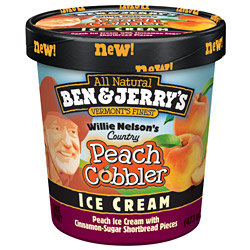
Today’s Peach Ice Cream is better than Mary’s
Mary’s peach ice cream was always a family favorite. Other employers worked hard to hire this amazing cook away, and often they succeeded. Mary left one place after the family became sick, not wishing to be sick herself, she said.
Mary was never ill in her life, she said, and she didn’t like to be around sick people. And wherever Mary went people got sick, and some of them died. It was common in the early 1900s for typhoid to be fatal; there were no antibiotics, so typhoid fever would kill some because the bacteria were highly virulent. They would take up residence in the gut and even cause the gut to perforate, which, in the early 1900s, meant death.
One family began to suspect that the Irish maid, Mary, was the source of their illness, so they hired Dr. George Soper to investigate. He suspected she was the source of the outbreak, as did the family.
Mary Mallon later would be called Typhoid Mary. She was a carrier of the salmonella bacteria that caused typhoid fever. Eventually the law caught up with Marry Mallon, and they did the only thing they could: she was hospitalized and quarantined for thee years until a judge set her free on condition she not gain employment as a cook. She agreed, only to take a job as a cook and make an entire hospital ill. In 1915 she was quarantined and spent the remainder of her days isolated. She did enjoy some celebrity as “Typhoid Mary,” and when she died the autopsy revealed that her gallbladder was filled with the bacteria Salmonella, that cause typhoid.
Mary herself was never ill, but the salmonella were able to hide inside the immune cells called Macrophages. Typhoid fever is spread when people don’t wash after going to the bathroom, and the peach ice cream made the perfect nutrient source for the bacteria. Even the freezing of the ice cream didn’t kill the bacteria, but it did stop them from growing just long enough until they got into the new person’s gut, where they would flourish, and cause illness.
It is a sound kitchen technique that can prevent much of the problems that are what we call food-borne illness today.
